|
   |
|
Page 3 |
Newsletter 134 Autumn 2021 © Hampshire Mills Group |
|
Watermills of the Lugg Valley
Ruth
Andrews
Photos by Ruth and Keith Andrews (except as noted) |
|
In 2015 Alan Stoyel
compiled a Pilot study of the mills and associated
water arrangements within the catchment area of the
River Lugg, in Herefordshire. Following in his
footsteps in May 2021 Keith and I were able to
photograph several of the mills.
|
|
We were able to gain
access to one of them, Wegnall (or Rodd) Mill
near Presteigne. The owners, Glenys Rebane and Paul
Murphy, very kindly permitted us to explore inside
and around the mill and they subsequently sent us
more information about the Rodd family, whose
ancestor Hugh Rodd (about 1540-1603) lived in and
worked an earlier mill on the site. |
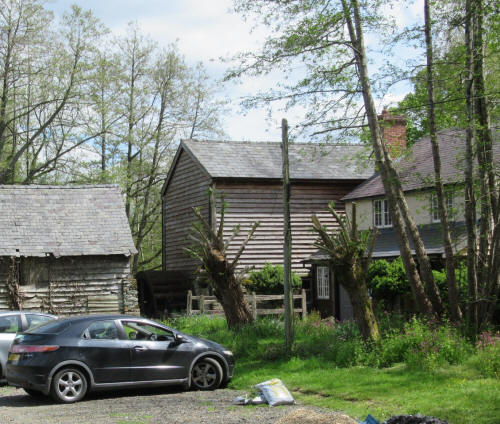
The wheel is between the shed on the left and the
weatherboarded mill in the centre, with the mill
house to the right.
|
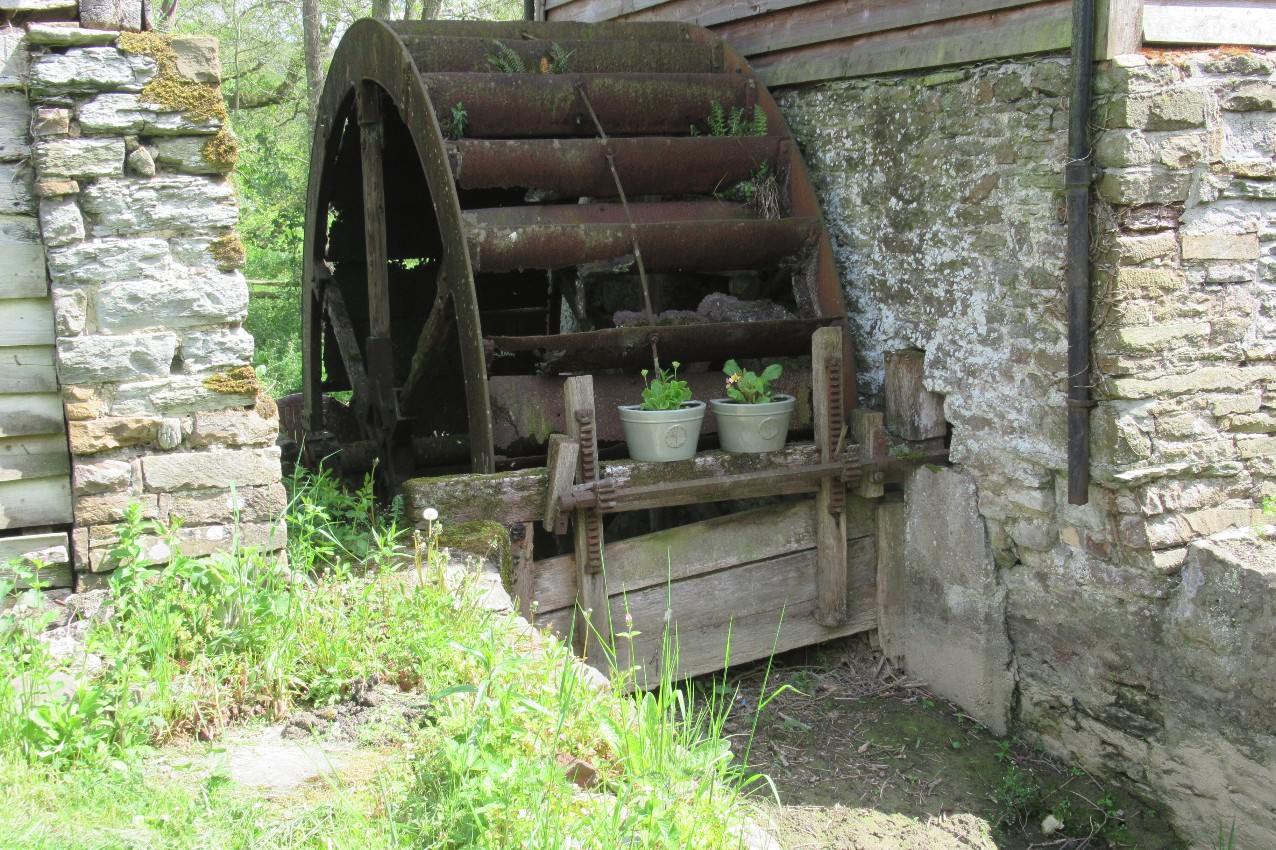
The external wheel,
inscribed RR & W MILES LEOMINSTER FOUNDRY 1870, is
14ft diameter by 5ft 2½in wide, and is all iron but
with radial wooden arms, on a 6in iron axle. It has
curved paddles, which have been described as ‘Poncelet-type’.
In Alan Stoyel’s
words: “Wegnall Mill is an 18th century
timber-framed corn mill which has been abandoned
with all its working parts complete. Now used for
some domestic storage, it has recently been
reboarded in order to halt its decay. The machinery
is of late 18th and mid-19th century date, with
three pairs of stones, driven by an external
low-breast iron waterwheel. The weir, leat, and
tailrace all remain, with a live water supply.“
The building is not
listed. It still seems to be stable, weatherproof,
and substantially untouched. Alongside it stands a
smaller but similarly constructed storehouse in
rather poorer condition.
|
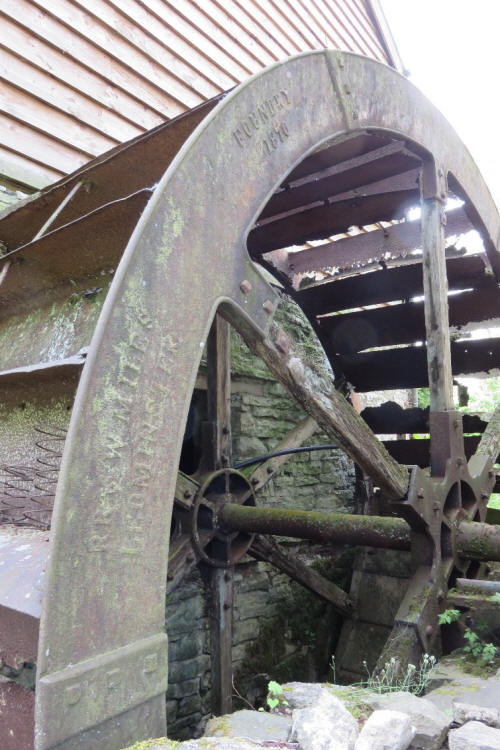
|
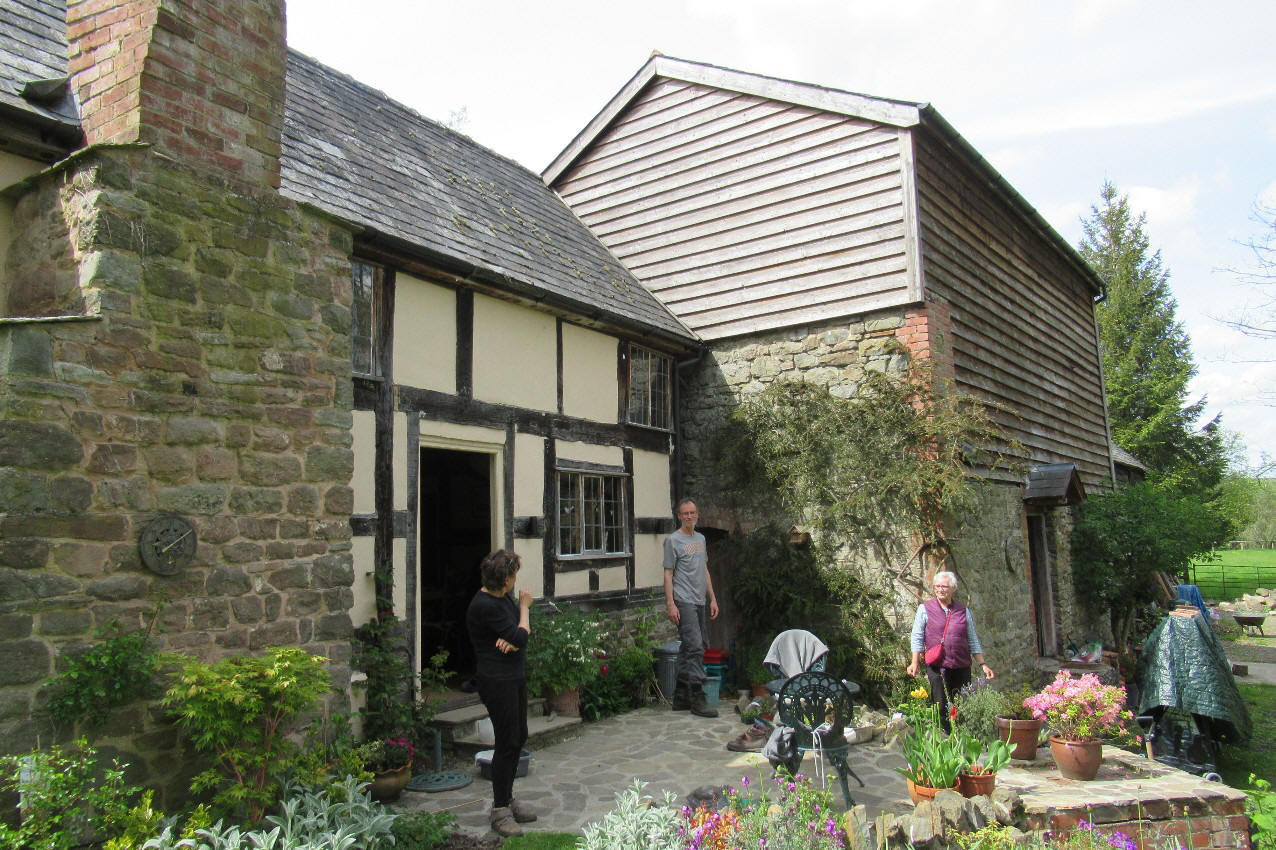
The attractive enlarged
mill house situated at 90 degrees to the mill
incorporates a half-timbered cottage which was moved
in derelict condition from another site in 1984.
|

The sack hoist shaft
and pulley
Picture
supplied by Glenys Rebane
|
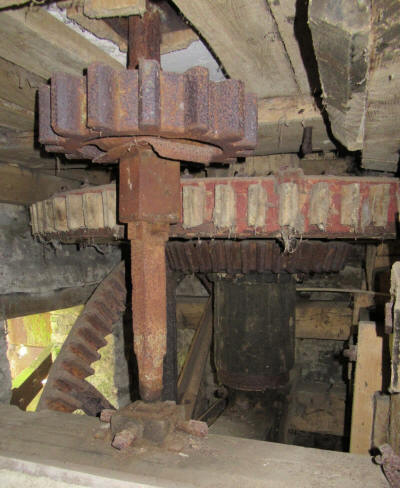
The great spur wheel
and a stone nut
|

The crown wheel and
millstones
Picture
supplied by Glenys Rebane
|
|
Aymestrey Mill
was built in 1861, and is grade 2 listed.
Alan Stoyel says:
“It was rebuilt after a fire, thought to be in the
1870s. It is a fine mill, in excellent condition.
All the working parts are complete and have been
restored to working state recently. It has a
magnificent weir, a live leat, and tailrace, and is
a first-class example of a mill of this period. The
group of buildings still includes its fine range of
pigsties. In extensions of the mill are a
water-powered printing press, and a turbine which
generated electricity.” |
 |
|
Mortimers Cross Mill,
at Lucton, also features in Alan Stoyel’s report,
which says that it has a particularly fine weir, a
stone structure at least 3m high. Disappointingly,
the mill and weir which is highlighted in blue on
the OS map as a place to visit is no longer
visitable – or indeed visible!
|
|
Cholstrey Mill,
near Leominster, also has a long history and
incorporates 17th and 18th century elements. The 6m
diameter interior waterwheel (just visible in the
leftmost bay of the brick building) has cast-iron
shrouds and a wooden axle. There are 3 sets of
stones and some machinery. The mill is grade 2
listed.
The rear wall of the
building has a very curious mix of dressed
sandstone, brick, and timber framing. There is a
suggestion that it was a domestic building that has
been converted to a mill.
A public footpath
passes the mill, so Keith was able to poke his
camera through a hole in the wall to see some of the
gearing, which is situated in the central brick part
of the structure, with the low arch of the headrace
just visible behind the fence.
|
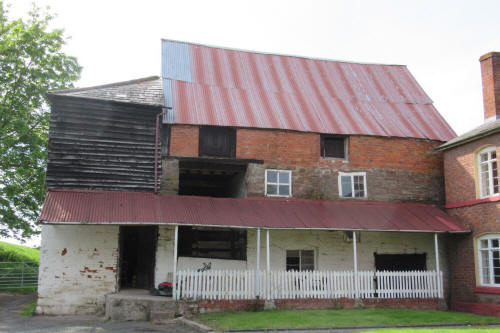 |
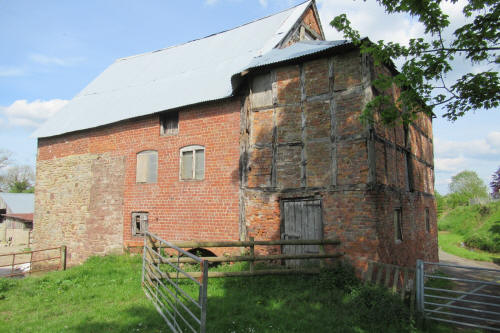 |
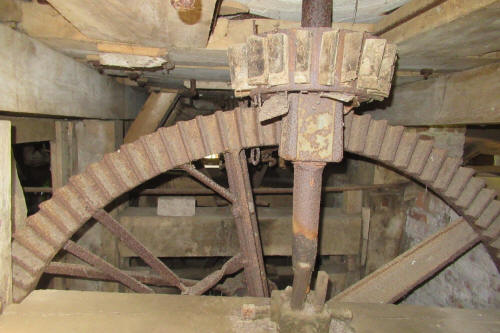 |
 |
Waterloo Mill,
Kingsland, also grade 2 listed, is certainly the
easiest to find and photograph, being on a main
road. It was built as a water-powered corn mill,
replacing an earlier one which stood to the south
west. The 4-storey mill is connected to a second
lower building by a weather-boarded walkway.
The undershot cast-iron
waterwheel has the inscription rr miles leominster
1861, similar to that at Wegnall Mill, but without W
Miles. The wheel is situated in a basic single-storey
wheelhouse on the left hand end of the range. The
stones floor has 3 millstones and the upright shaft
and crown wheel of the gearing system installed by
Richard Miles.
|
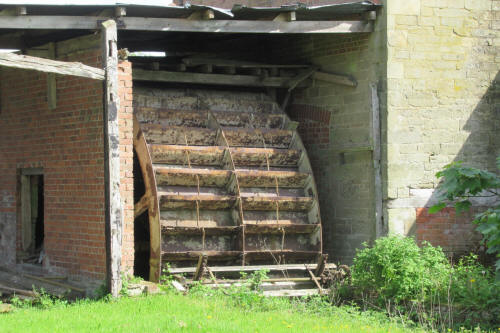 |
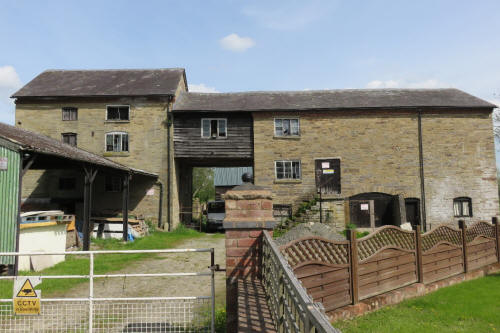 |
|
Although on the River
Arrow rather than the River Lugg, the famous ‘black
& white’ Arrow Mill at Eardisland, which we
hoped to see, is also not visitable or visible,
hidden up a gated private drive with unwelcoming
notices.
|
|
Also on the Arrow
rather than the Lugg is Arrow Lodge Mill
(confusingly now called Arrow Mill) in Kington.
This mid-19th century mill has lost its internal
workings except for the sack-hoist and a turbine.
The complex that has grown around it includes a
stone maltings, a brick bakery, and a stone house,
re-fronted in the 19th century. There is evidence
of two older waterwheels. |
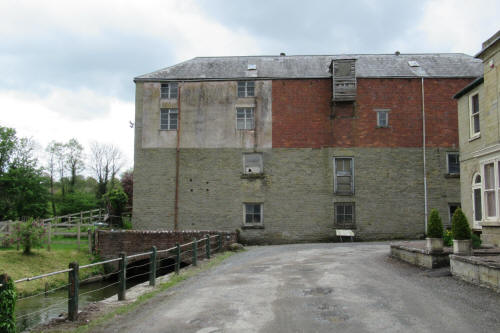 |
|
Information from Alan
Stoyel’s study (mentioned above), The
Mills of the Lugg Valley in Radnorshire by
Gordon Tucker, and the Historic England listings for
Aymestrey, Waterloo, and Cholstrey Mills.
|
|
|
